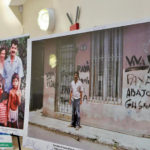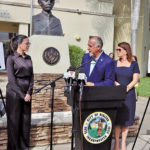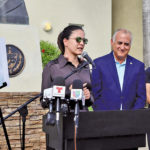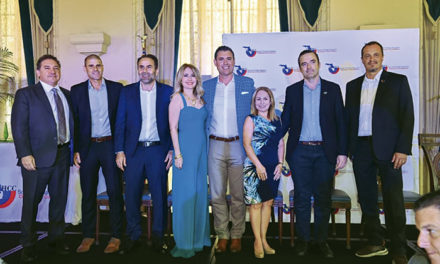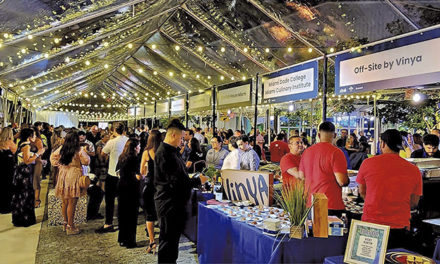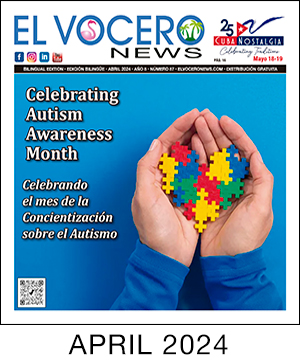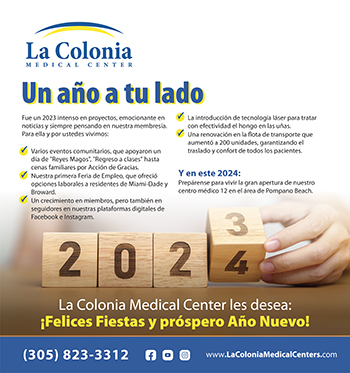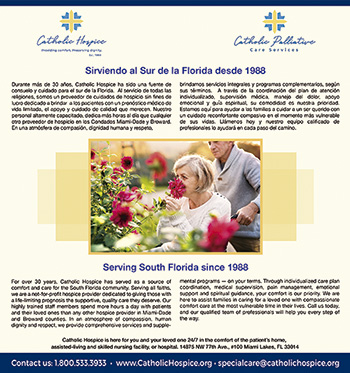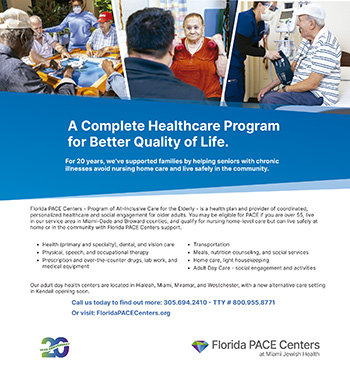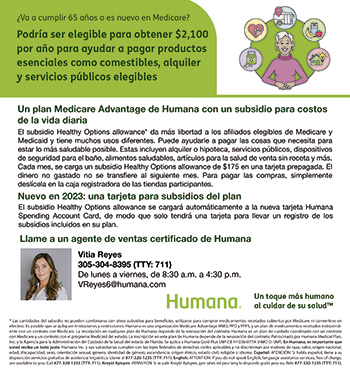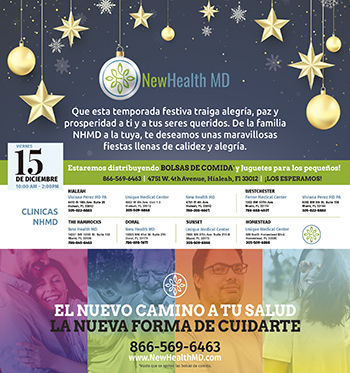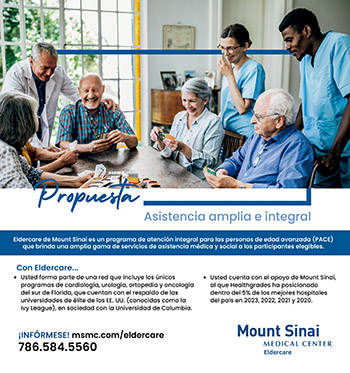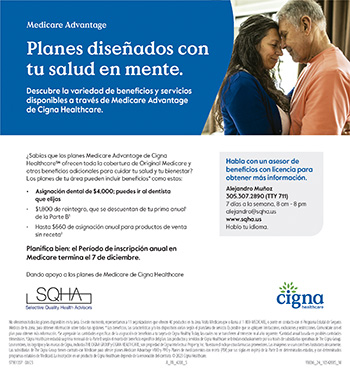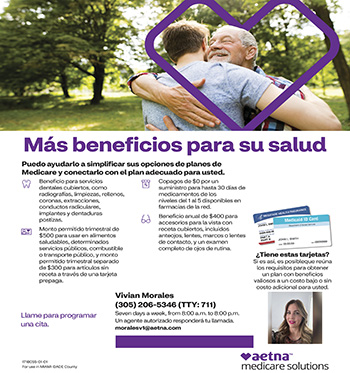By Lou Hernández
A morning ceremony was held at Walker Park in Hialeah, July 27, to announce the construction of a memorial to be dedicated to deceased Cuban human rights activist and political opposition leader Oswalda Payá Sardiñas. Dedicated by Hialeah Mayor Estebán Bovo, Jr., as part of the community outreach initiatives he began earlier this year focused around city parks, the memorial is expected to be the first honoring heroic individuals committed to the cause of freedom. Accompanying the mayor at the podium were Hialeah city council member Vivian Casals-Munoz and Florida state representative Alex Rizo.
“We want to establish a place to recognize figures who fight for liberty, against all odds, in a space we can call Freedom Square,” informed the mayor in front of the park’s James S. Walker Community Center. “We saw last July 11 [2021] the Cuban people raise their voice, and that action was applauded and supported here in Miami and Hialeah and elsewhere. That action brought to mind the ultimate sacrifice of Oswaldo Payá. We want to shine a light on that sacrifice with this initial dedication. Payá could have left Cuba on different occasions, but he chose to stay and endure incessant harassment and indignities perpetrated by the Castro regime against him and his family and friends and associates.”
On July 22, 2012, Oswaldo Paya, 60, was killed, under mysterious circumstances, in an automobile accident in eastern Cuba. Also killed was fellow Cuban Harold Cepero Escalante, 32, a Payá protégé. Two foreigners in the vehicle, including the driver, survived.
“Payá stayed in Cuba and continued to step on the toes of the dictatorship, so much so that it cost him his life and that we cannot forget,” stated Bovo, prior to presenting a framed proclamation of the event to the Paya family. “In the future, when people pass by here, we want them to reflect on who was Oswaldo Payá, what was his mission? And to make it known that he was one of the strongest voices for freedom inside of Cuba. We will never stop being a thorn in the side of those that take sides with the totalitarian regime of Cuba. We will honor those, not just in Cuba, but those from other nations who fight for liberty, who have given their lives for freedom. Today, we take this first step to honor Oswaldo Payá and those who are fighting for a free Cuba.”
Payá remains alive through the efforts of his family, in particular, his daughter, Rosa Maria. “On behalf of my mother Ofelia and my brothers, Oswaldo and Reinaldo, I want to thank everyone involved for this recognition of my father’s life work and service and legacy,” said Rosa Maria, who, in a high-profile manner over the last several years in exile, has taken up the mantle of her father’s quest for a free Cuba. “Just a few days ago, we commemorated the tenth anniversary of the assassination of my father and Harold Cepero at the hands of the Cuban dictatorship.”
Rosa Maria has repeatedly requested the international community to investigate the martyred death of her father and Cepero. “This regime has continued their indiscriminate killing. That is why recognizing my father in this Freedom Square is also a call for justice, a call to end the impunity under which the regime operates. My father dedicated his life to change Cuba, to spur every Cuban to reclaim their
rights. My father said we Cubans have to be the protagonists of our history, and I think we are doing
- We saw it on the streets recently. This has been a long struggle. It’s been 63 years. This square will be a constant reminder of the struggle for freedom of the Cuban people.”
Rosa Maria recognized the efforts of the Foundation for Pan-American Democracy, whose representatives were present, as well as those in attendance from the offices of U.S. Florida Senators Marco Rubio and Rick Scott, and Governor Ron DeSantis. She closed her remarks by paraphrasing a much-recognized quotation from her father: “The right to have rights is more alive than ever in the Cuban people.”
Two murals will be erected in the park, one depicting the L-symbol of an extended thumb and forefinger, representing “Liberty,” that Payá was fond of using. The other mural will include some of Payá’s most memorable sayings.
El monumento a Oswaldo Payá será erigido en el Parque Walker de Hialeah
Por Lou Hernández
Una ceremonia matutina se llevó a cabo en Walker Park en Hialeah, el 27 de julio, para anunciar la construcción de un monumento que se dedicará al fallecido activista cubano de derechos humanos y líder de la oposición política Oswaldo Payá Sardiñas. Dedicado por el alcalde de Hialeah, Estebán Bovo, Jr., como parte de las iniciativas de alcance comunitario que comenzó a principios de este año centradas en los parques de la ciudad, se espera que el monumento sea el primero en honrar a individuos heroicos comprometidos con la causa de la libertad. Acompañando al alcalde en el podio estuvieron miembro del consejo de la ciudad de Hialeah Vivian Casals-Muñoz y el representante estatal de Florida Alex Rizo.
«Queremos establecer un lugar para reconocer a las figuras que luchan por la libertad, contra viento y marea, en un espacio que podemos llamar Plaza de la Libertad», informó el alcalde frente al Centro Comunitario James S. Walker del parque. «Vimos el pasado 11 de julio [de 2021] al pueblo cubano alzar la voz, y esa acción fue aplaudida y apoyada aquí en Miami y Hialeah y en otros lugares. Esa acción trajo a la mente el sacrificio final de Oswaldo Payá. Queremos arrojar luz sobre ese sacrificio con esta dedicación inicial. Payá podría haber salido de Cuba en diferentes ocasiones, pero optó por quedarse y soportar el acoso incesante y las indignidades perpetradas por el régimen de Castro contra él y su familia y amigos y asociados».
El 22 de julio de 2012, Oswaldo Payá, de 60 años, murió, en circunstancias misteriosas, en un accidente automovilístico en el oriente de Cuba. También murió su compatriota Harold Cepero Escalante, de 32 años, protegido de Payá. Dos extranjeros en el vehículo, incluido el conductor, sobrevivieron.
«Payá se quedó en Cuba y siguió pisando los callos de los pies de la dictadura, tanto que le costó la vida y que no podemos olvidar», afirmó Bovo, antes de presentar una proclamación enmarcada del evento a la familia Payá. «En el futuro, cuando la gente pase por aquí, queremos que reflexionen sobre
quién fue Oswaldo Payá, ¿cuál fue su misión? Y dar a conocer que fue una de las voces más fuertes por la libertad dentro de Cuba. Nunca dejaremos de ser una espina en el costado de quienes toman partido por el régimen totalitario de Cuba. Honraremos a aquellos, no solo en Cuba, sino a aquellos de otras
naciones que luchan por la libertad, que han dado sus vidas por la libertad. Hoy damos este primer paso para honrar a Oswaldo Payá y a quienes luchan por una Cuba libre».
Payá sigue vivo gracias a los esfuerzos de su familia, en particular, su hija, Rosa María. «En nombre de mi madre Ofelia y mis hermanos, Oswaldo y Reinaldo, quiero agradecer a todos los involucrados por este reconocimiento del trabajo de la vida de mi padre, la entrega y el legado», dijo Rosa María, quien, de manera destacada en los últimos años en el exilio, ha asumido el manto de la búsqueda de su padre por una Cuba libre. “Hace apenas unos días, conmemoramos el décimo aniversario del asesinato de mi padre y Harold Cepero a manos de la dictadura cubana».
Rosa María ha pedido reiteradamente a la comunidad internacional que investigue la muerte martirizada de su padre y de Cepero. «Este régimen ha continuado su matanza indiscriminada. Por eso reconocer a mi padre en esta Plaza de la Libertad es también un llamado a la justicia, un llamado a poner fin a la impunidad bajo la cual opera el régimen. Mi padre dedicó su vida a cambiar Cuba, a estimular a cada cubano a reclamar sus derechos. Mi padre decía que los cubanos tenemos que ser los protagonistas de nuestra historia, y creo que lo estamos haciendo. Lo vimos en las calles recientemente. Esta ha sido una larga lucha. Han pasado 63 años. Esta plaza será un recordatorio constante de la lucha por la libertad del pueblo cubano».
Rosa María reconoció los esfuerzos de la Fundación para la Democracia Panamericana, cuyos representantes estuvieron presentes, así como los asistentes de las oficinas de los senadores estadounidenses de Florida Marco Rubio y Rick Scott, y el gobernador Ron DeSantis. Cerró sus palabras parafraseando una cita muy reconocida de su padre: «Ese derecho a tener derechos está más vivo que nunca en el pueblo cubano».
Se erigirán dos murales en el parque, uno con representación del símbolo L de un pulgar e índice extendidos, que representa la palabra «Libertad», que a Payá gustaba usar. El otro mural incluirá algunos de los dichos más memorables de Payá.


